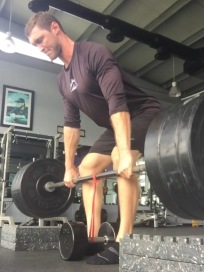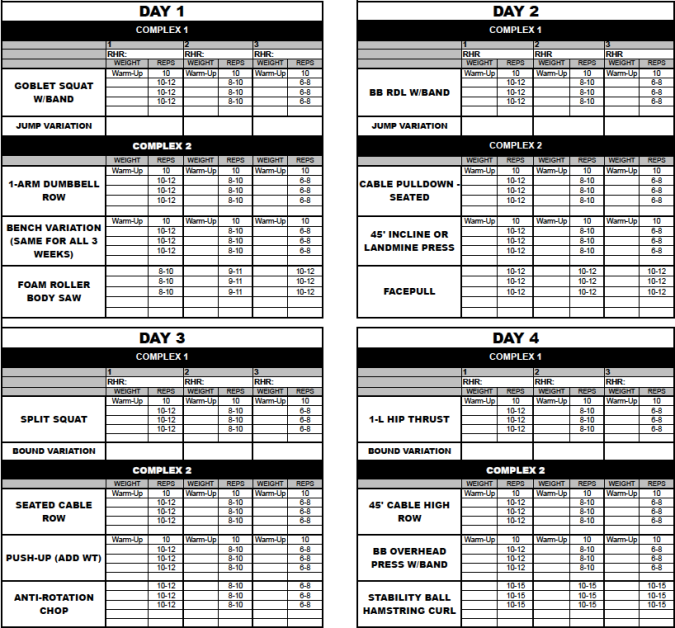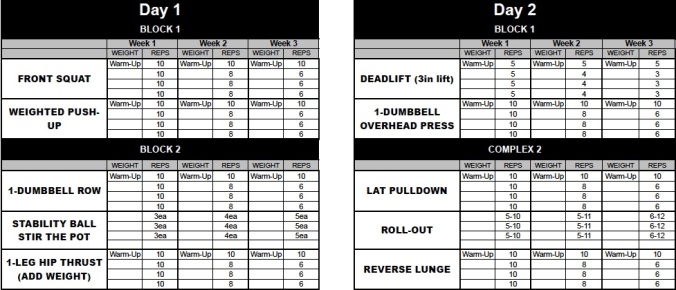Life events caught up with me and I missed my goal of a post every 1-2 weeks. I finally got back on the wagon with this post. This post is based on of my personal experiences in the field. I kept the example general but I feel that it is representative of situations that commonly occur in a few different sports and settings.
Examples for Extra Conditioning
A quality strength and conditioning coach will have conducted a needs analysis of an athlete’s sport. An examination of the physiological requirements of the sport is a part of this needs analysis. Depending on the demands of the sport, certain training modalities may not lead to adaptations that benefit sport performance, and may even interfere with other beneficial adaptations. An example would be strength and power athletes performing additional long distance running. Many athletes and sport coaches hold the belief that long distance running has a distinct endurance benefit for their strength and power athletes. As such, many strength and power athletes commonly perform long distance running for extra work and many sport coaches often encourage it. This can occur even when a strength and conditioning coach has a planned and periodized program that abstains from such a conditioning modality and instead utilizes modalities that are more complementary to the requirements of the sport.
Let me contextualize a hypothetical example in which extra work will be provided to an athlete. In this hypothetical situation, strict adherence to the strength and conditioning program is not always mandatory for the athlete. Additionally, non-strength and conditioning/sports medicine stakeholders can overrule the strength and conditioning coach when it comes to training decisions. For this reason, concessions may need to be made to both the athlete and other actors, and the approach must remain very collaborative. This ensures that a productive and progressive strength and conditioning program may remain in place and supported by all parties involved.
In this example, let us assume that the strength and power athlete has been determined to have an issue with their general preparedness that affects their task specific preparedness (repeated efforts of throwing, sprinting, etc.). In the past, additional long distance running workouts may have been commonly prescribed to remedy this issue. However, due to the interference effect, long steady-state aerobic work could negatively affect the athlete’s maximal strength and power outputs in practice and in competition. Additionally, it can interfere with positive adaptations from specific training modalities designed to elicit adaptations in maximal strength and explosive power. [1] The interference effect refers to reductions in strength and power when these two qualities are trained concurrently with endurance training modalities that are primarily aerobic in nature. This has been shown to be particularly evident when aerobic training is programmed at high volumes and when distance running is the modality.
Cost Versus Benefit and Finding Alternatives
Improvement in aerobic capacity may help the athlete recover between specific efforts in their sport and improve his/her general preparedness. However, the reductions in strength and power from using distance running to build aerobic capacity could outweigh the benefits. Referring back to our example, if it was determined that this athlete required improved aerobic capacity, the strength and conditioning coach would be better off selecting a non- or low-impact LSD (Long Slow Distance) modality over LSD running. LSD work performed on a bike, for example, does not seem to interfere with strength performance to the same degree as distance running.[2] Thus it may be prudent to provide extra work in the form of non- and low-impact modalities like the bike, elliptical, or even power walking with a lightly loaded sled. These modalities have similar benefits to distance running (improved aerobic capacity, quicker heart rate recovery, lower resting heart rate, etc.) with lower costs (reduced readiness, orthopedic stress, negative effects on other physical qualities, etc.).
Some may argue that strength and power athletes should avoid all LSD work, and only perform anaerobic conditioning. However, assuming that this was already addressed in the team’s conditioning program, doing extra anaerobic conditioning could put the athlete on the path towards chronic fatigue (see Considerations for Extra Work Part 1: Preparedness, Readiness, and Fatigue for info on fitness versus fatigue). With a strength and power athlete, one session of extra LSD work on a bike or elliptical with a heart rate of ~130-150 could be all it takes to see improvements in general fitness and aerobic capacity. Also, is easy for the athlete to recover from and does not significantly reduce readiness. Therefore, it has a low cost and high benefit in this situation.
Minimum Effective Dose for Extra Work
In this example, the minimum effective dose has multiple meanings. The first is physiological. We generally want to prescribe the athlete with the minimum effective dose of an exercise intervention to allow him/her to see a positive adaptation in the targeted quality. For example, a 20-30 minute session of LSD work on a bike 1-2x/week may be sufficient to drive down resting heart rates, see improved heart rate recovery between efforts, and obtain other benefits from improved aerobic capacity. Having this athlete perform higher volumes of this exercise may add unnecessary fatigue. Time spent performing extra work is time away from recovery and/or practicing sport skills, and it must be accounted for.
The second is perception. In the defined context of this example, the other actors (sport coaches, administration, etc.) and the athlete need to perceive that the athlete has been given enough extra work in order for them to feel that the athlete will improve. If they do not, the strength coach runs the risk of having the athlete performing unmonitored extra work in secret or one of the other actors overruling the strength coach and dictating the training intervention. This could lead to undesirable outcomes as uncertified actors are now dictating training interventions and doses that may lead to negative performance outcomes or injury. Psychology can trump physiology and it is important that the athlete and other actors involved in his/her development feel that the training intervention and dose are sufficient enough to achieve the desired effect. This may mean that the minimum effective dose of a given modality in order to achieve positive perception is greater than the actual minimum effective dose required to achieve a positive physiological change. For example 1x/week for 20-30 minutes of LSD work on a bike may be all it takes for physiological change but the coach programs 2x/week in agreement with the athlete and other actors. This is of course, provided that the strength coach determines that the second session will not detract from readiness.
Conclusion
Extra conditioning work is always tricky to productively program and implement. Context often dictates the manner in which extra work can be implemented. Strength and conditioning coaches must be mindful of the contexts in which they work. It is essential that we as strength and conditioning coaches always seek to educate athletes, coaches, and other stakeholders involved in sport, in order to ensure that extra work is appropriately applied. Education can lead to better program adherence and facilitate support for beneficial and appropriate training interventions in the future. Athletes’ and sport coaches’ trust in the strength and conditioning coach and the program will avert many of the issues with perception of the minimum effective dose. However, trust takes time and patience to develop. Please comment or contact me if you have any thoughts on the matter.
– Max
[1] Braechle, T. R., & Earle, R. W. (2008). Essentials of Strength and Conditioning (3rd Ed.) [Kindle]. Kindle Location 3887
[2] Wilson, J. M., Marin, P. J., Rhea, M. R., Wilson, S. M., Loenneke, J. P., & Anderson, J. C. (2012). Concurrent Training: A Meta-Analysis Examining Interference of Aerobic and Resitance Training Exercises. Journal of Strength and Conditioning Research, 26(8), august, 2304-2305


